Wumengshan National Geopark is located in Liupanshui City, Guizhou Province, with a total area of nearly 400 square kilometers.
The Wumengshan National Geopark is characterized by the peak of Wumeng and its karst geology on the eastern slope. It is dominated by the karst gorge in the north of the Panjiang River. It has various types of karst geological relics and landscapes formed in various periods since the Cenozoic in the eastern slope of the Qinghai-Tibet Plateau. The karst geological landforms, mountainous landforms, tectonic remains, paleontological fossils and ancient human sites in the area constitute a unique landscape of the park. In particular, the karst geological phenomenon formed and developed under different geological and geomorphological conditions in different periods is a typical plateau karst landform in the world.
Its natural vegetation includes coniferous forest, broad-leaved forest, bamboo forest, shrub and shrub bush, swamp and aquatic five types of vegetation; zonal vegetation is a subtropical evergreen broad-leaved forest. The eastern vegetation is a moist subtropical evergreen broad-leaved forest; the southern vegetation is a tropical valley with a tropical component; the western vegetation is a subtropical semi-humid evergreen broad-leaved forest. Vegetation shows the characteristics of north-south transition and east-west transition in horizontal distribution.
Except for the national first-class protected animal black langurs, there are 13 national second-class protected animals which includes 5 kinds of mammals, Tibetan eagle monkeys, macaques, small civet cats, gorals and forest owls; 7 species of birds, white-bellied golden pheasant, lynx, sparrow hawk, red pheasant, bubobubo, collar owl, bantou carp, and Asian Barred Owlet;and one specie of amphibians, Guizhou newt.
The Liupanshui Wumengshan National Geopark consists of two parks, the Beipanjiang Gorge and the Biyundong Cave Group. In addition to, it includes Jiucaiping, Tianshengqiao,Alehe, Xinmin fossil sites,Dadong ancient human ruin and some other scenic spots.
Main Attractions
Biyun Cave
Biyun Cave is located 1km south of Chengguan Town, Pan County, with a length of 2281 meters. Biyun Cave has a profound historical and cultural connotation. Before the 14th year of Ming Hongwu (AD 138), it had become a famous tourist attraction.
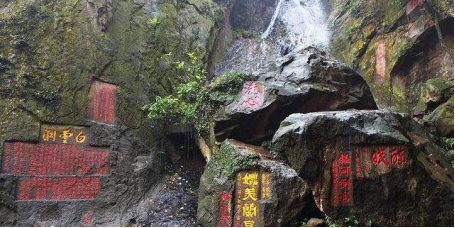
Wumengshan Baiyun Cave
Xingxiu Cave
Xingxiu Cave is located 3 kilometers south of Chengguan Town, Pan County. There are two holes. The height difference between these two holes is nearly 50 meters. The sediments such as stalactites, stone pillars and sarcophagus in the cave are very mature. The calcite in the cave is pure and coarse. It is shining like stars under the lights, so this cave is called Xingxiu Cave.
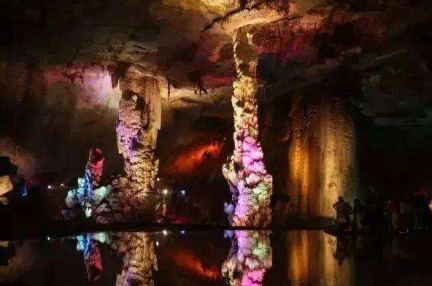
Wumengshan Xingxiu Cave
Beipanjiang Gorge
Beipanjiang is the largest river in Liupanshui, belonging to the Pearl River system. The height difference from the top of the mountain to the river surface is 1200~1700 meters. Therefore, it constitutes a majestic and thrilling gorge landscape.
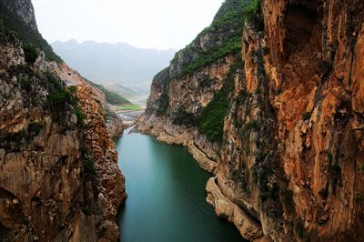
Wumengshan Beipanjiang Gorge
Liuchehe Gorge
Liuchehe Gorge is about 20 kilometers in length and is a tributary of the Beipanjiang. Its valley is deep enough to reach about 1000 meters.
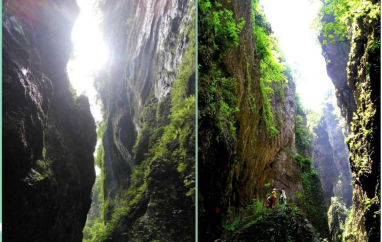
Wumengshan, Liuchehe Gorge
Jiucaiping
The mountain is composed of limestone, and the top of the mountain is flat. It retains the oldest stone forest landform with lush vegetation which includes arrow bamboo, shrubs and wild leek.
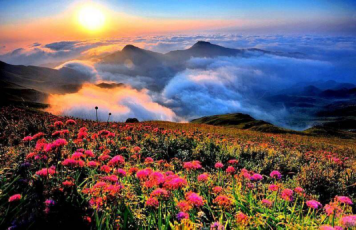
Wumengshan Jiucaiping
In addition to , the Wumengshan National Geopark is home to ethnic minorities , such as Miao, Buyi, and Yi. The ethnic customs are rich and varied.

